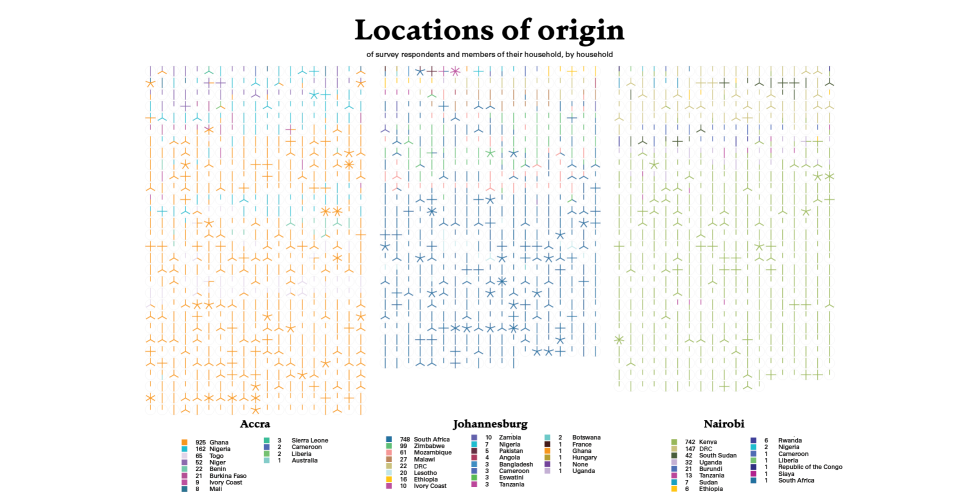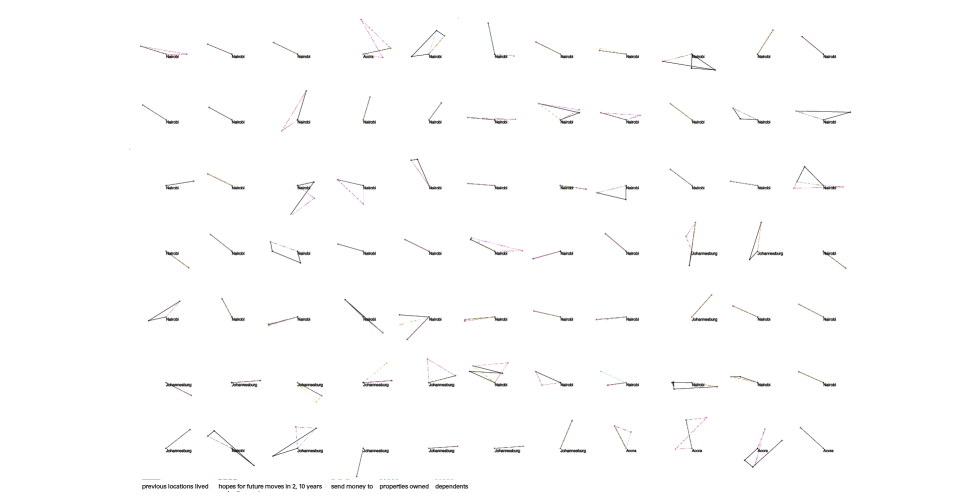Atlas of Migration
This project seeks to understand the emerging patterns of human mobility, urbanism, and socio-political changes through extensive surveys in Accra, Nairobi, and Johannesburg, conducted by the African Centre for Migration and Society.
In an era of increased fluidity, political devolution, institutional fragmentation, and economic and environmental precarity, African cities are reshaping under a young population preparing for uncertain futures. The patterns of African human mobility and urbanism and its socio-political implications of these changes remain under-studied. Despite lacking markets and institutions to unify their populations, these cities are not chaotic but are evolving blends of local and translocal regulation and engagement. Rather than imposing meaning and direction to people’s interactions and engagements with each other, institutions, and the built environment, a new grounded understanding of the bases of authority and regulation emerging from people’s fragmented, uncertain, and mobile futures is needed. This project aims to untangle the complex, fragmented, and interconnected spaces that individuals are shaping amidst uncertainty.
This project visualizes connections to place among residents in Accra, Ghana; Nairobi, Kenya; and Johannesburg, South Africa. All of the information represented here is based on an extensive survey designed and conducted by the African Centre for Migration and Society (ACMS) with local partners in these three cities. In Accra, 581 people were interviewed within the neighborhoods of Madina, Old Fadama and Jamestown. In Nairobi 548 people were interviewed in Kawangware, Kayole, and Ongata Rongai, and in Johannesburg 515 people were interviewed in Berea, Katlehong, and Diepsloot.
The ACMS survey captures everyday geographies through eighty-five questions related to “place” including: places lived, where money is sent and received, where properties are owned, where relatives live, and where household members have moved. Collectively representing the ties of individuals to these kinds of places presents an image of lives that are variously connected to many sites beyond a current home, or current city.
While more than half of the world population now live in cities, there are few studies or analyses of individuals movements, trajectories and lives. This project aims to fill the gap of studies in rural-urban migration and the effect of migration on places of departure and arrival. What follows is an exploration of the spatial histories, connections, and aspirations of these individuals.
The project team continues to experiment with visual and mapping technologies to illustrate and analyze the interactions among people, space, and time. In addition to generating materials for academic and online publication, we expect the data and analysis will provide the foundation for multiple graduate student projects, for reconsidering policy and planning modalities, and for the basis for further collaboration and inquiry.
This project is in collaboration with University of the Witwatersrand, Johannesburg, and the African Centre for Migration & Society (ACMS). The Andrew W. Mellon Foundation provided support for this project through funding for the Mobility, Temporality, and Africa’s Future Politics initiative at ACMS and through funding to support research on Spatial Inequality at the Center for Spatial Research.




